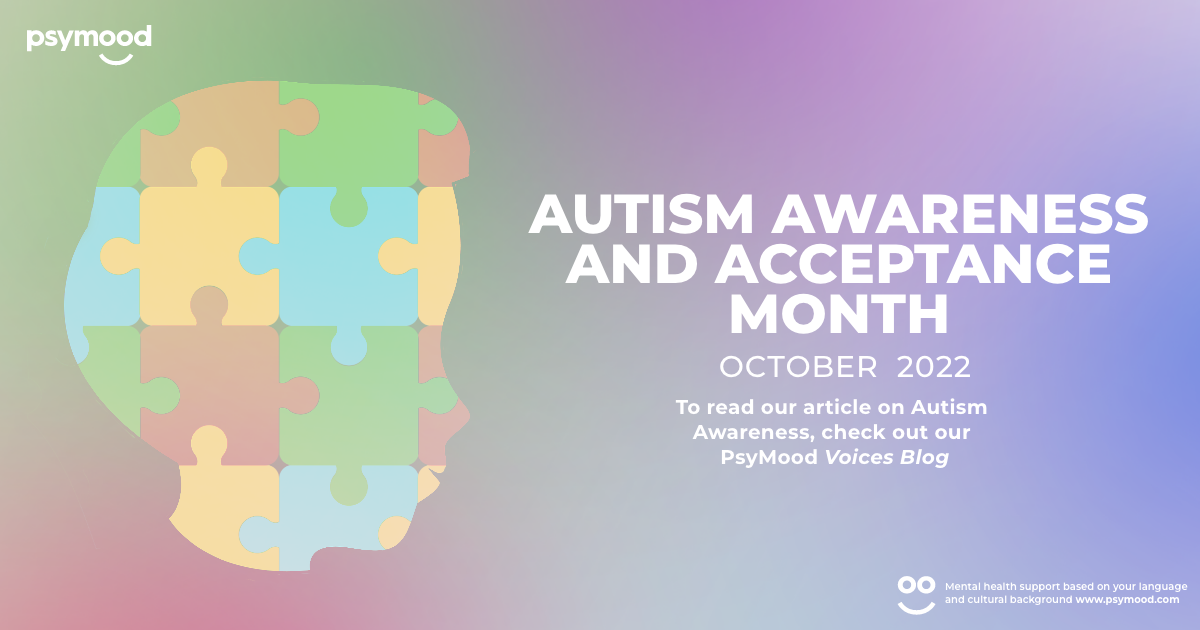What is Autism Awareness and Acceptance Month?
In Canada, October is Autism Awareness and Acceptance Month. Canadians come together to learn more about Autism Spectrum Disorder, (ASD), and how we can support individuals living with ASD. It is estimated that 1 in 66 children in Canada is diagnosed with ASD, yet, ASD remains heavily misunderstood by many people.
What is Autism Spectrum Disorder?
Autism Spectrum Disorder or ASD is a developmental disability that causes many neurodivergence in the affected individual. People with ASD typically struggle with social communication/interaction, may exhibit restricted and repetitive behaviours, and may have specific interests. People living with ASD have divergent ways of learning, playing, communicating and developing.
The spectrum of autism is wide. It includes behaviours like: difficulty with social interaction or communication; unusual or restrictive interests; inability to play or engage in imaginative play; repetitive behaviours (such as hand flapping), sensitivity to sensory input such as loud noises or bright lights, having difficulties with the back and forth of conversation, often talking at length about a favourite subject without noticing that others are not interested or without giving others a chance to respond, having an unusual tone of voice that may sound sing-song or flat, having trouble understanding another person’s point of view or being unable to understand other people’s actions.
Autism spectrum disorder affects people differently depending on their age at diagnosis and their level of verbal ability. For example, some children may be highly verbal while others are not able to speak at all. Some individuals may have trouble learning how to communicate with others while others learn quickly but struggle with language skills later on in life.
Facts about Autism
- There is no cure for autism.
- ASD affects about 1 in 66 children.
- 70 million individuals worldwide have autism
- Autism is more common in men than women. ASD is 4 times more common in men than in women.
- Autism has no bias. ASD is a condition that can be found in people all over the world, people from all different countries, races, ethnicities, and socioeconomic backgrounds.
How to Observe Autism Awareness and Acceptance Month?
- Individuals with ASD are neurodivergent and each person with ASD is affected differently. There is so much to learn about when it comes to ASD and Autism Awareness and Acceptance month is the perfect time to read up on ASD and how it affects individuals.
- Support Autism-friendly businesses and employers. Do some research to find autism-friendly businesses in your area and make an effort to visit the business and support them!
- Spread awareness and kindness in your community.
- Raise awareness with what you wear! There are different ways to show your support with the clothes you wear. If it’s wearing the colour of the rainbow, like a tie-dye shirt, or wearing clothes symbols or words or phrases, anything you choose that brings ASD awareness is appreciated. Keep it fun and positive!
- Donate to your local ASD community centre, charity or research! The number of people diagnosed with ASD is growing every year and we still don’t know a lot about the condition. This month, find charities around you that support ASD.
PsyMood is a digital tool designed to help you find the support you need in the language that you are most comfortable with. PsyMood considers cultural background, geographical location, interests, and personal needs, amongst other factors, to pair you with service providers for either online or in-person therapy sessions.
Check out our other blogs here!


.png)
.png)
.png)
Recent Comments